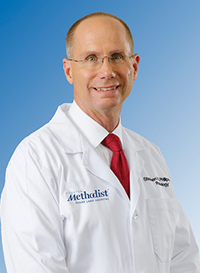Posted on Sep 30, 2016 in
FOCUS ON THE CURE

Stephen W. Phillips, MD
Houston Methodist
Sugar Land Hospital
Technology can save your life. That’s one of the most important messages women need to hear during October, because today’s advanced imaging technology can make a significant difference in the early detection of breast cancer.
Houston Methodist Breast Care Center at Sugar Land uses the latest and most effective imaging tools to catch breast cancer at its earliest stages, when treatment is most effective. One of those technologies is low-dose radiation tomosynthesis, also known as 3-D mammography, which has two major benefits – the ability to pinpoint tumors when they are undetectable in a dense breast on a traditional 2-D mammogram and the lowest radiation exposure of any mammography machine on the market.
The Genius™ 3-D mammogram provides clearer pictures and a more accurate screening than conventional machines. Radiologists can pull images from varying perspectives to examine anything of concern on screening, which reduces the number of callbacks for more testing. In addition, the system requires no additional compression and takes just a few seconds longer than traditional 2-D mammogram. The low-dose tomosynthesis system is approved by the FDA as being clinically superior to conventional mammography.
Another tool available at the breast care center is LumaGEM™ low-dose molecular breast imaging (MBI) – the first FDA-approved digital imaging system to provide clear images of lesions in dense breast tissue. Women with dense breast tissue are five times more likely to develop breast cancer, and clinical studies have shown that MBI detects three times as many cancers as traditional mammography, with the same level of radiation. The Houston Methodist Breast Care Center at Sugar Land was the first in the greater Houston area to offer low-dose molecular breast imaging, primarily as a secondary diagnostic tool for women with suspicious findings or difficult-to-interpret mammograms.
Today, most women are aware of the importance of monthly self-screening and annual clinical exams, along with annual mammograms after age 40. But many women aren’t aware that not all hospitals offer the same level of screening. Technology makes a difference, as can the skill and knowledge of the physicians and technologists working on your behalf. Your physician or breast radiologist can help you decide which level of screening is best.
Houston Methodist Breast Care Center at Sugar Land is dedicated to the fight against breast cancer. They offer all-digital mammography, molecular breast imaging, breast ultrasound, breast MRI, ultrasound biopsies, stereotactic biopsies and MRI-guided biopsies, all under one roof. If cancer is detected, the Houston Methodist Cancer Center at Sugar Land provides access to clinical trials and the most advanced treatments available, such as chemotherapy, and hormone, drug and radiation therapy. Innovative surgical techniques and breast reconstruction surgeries are also available.


 <
<






